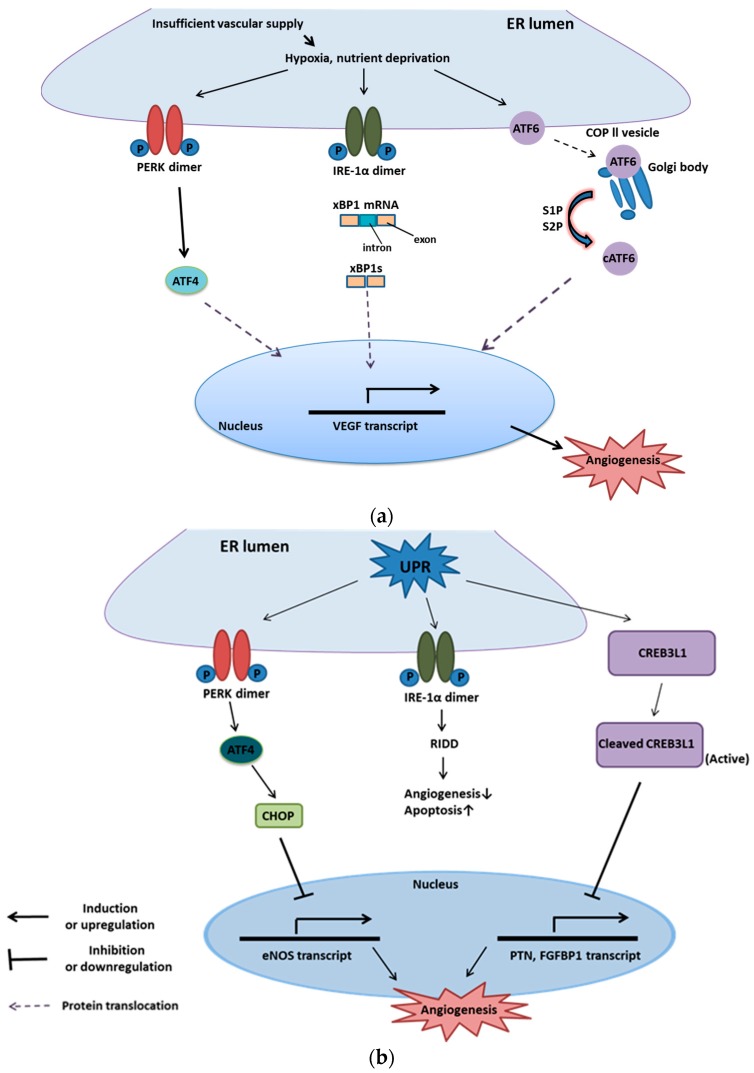Figure 5.
UPR and angiogenesis. [75] (a) UPR and pro-angiogenesis. Several low-stress adversities, such as hypoxia and nutrient deprivation, are accessible to activate three branches of UPR (IRE-1, PERK, and ATF6) on the ER membrane. Active IRE-1, PERK, and ATF6 can trigger transcription factors, namely XBP1s, ATF4, and cleaved ATF6, respectively, to upregulate VEGF expression, which leads to endothelial cell survival, proliferation and migration for angiogenesis; (b) UPR and anti-angiogenesis. Severe hypoxia and nutrient deprivation stimulate UPR to activate PERK on the ER membrane. Activated PERK can induce ATF4, a transcription factor, to upregulate the expression of CHOP. CHOP also serves as a transcription factor and is accessible to bind with pro-angiogenic mRNA, such as eNOS, to inhibit angiogenesis. Furthermore, high-intensity ER stresses trigger UPR and stimulate CRE3BL1 to be cleaved by RIP (regulated intermembrane proteolysis) to generate active CRE3BL1. Then, the activated CRE3BL1 translocates to the nucleus and binds with pro-angiogenic mRNA, such as PTN (Pleiotrophin) and FGFBP1 (Fibroblast growth factor-binding protein1), to block angiogenesis.

